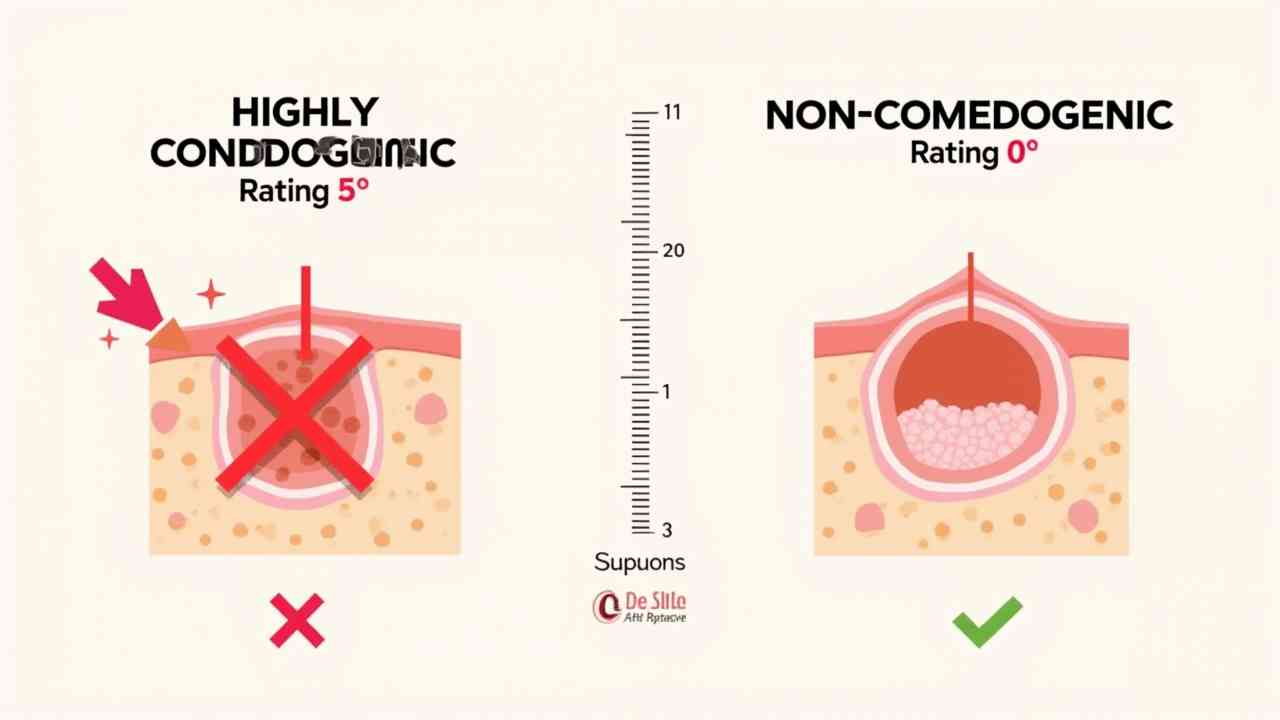
🧪 What is the Comedogenic Rating? A Skincare Guide to Clogged Pores
🧪 A Guide to the Comedogenic Rating (The Pore-Clogging Scale) 🧪
In the world of skincare, especially for those with acne-prone skin, you will often hear the term "comedogenic." This scientific-sounding word is the key to understanding why some products cause breakouts while others do not. The comedogenic rating is a simple tool used to measure this potential.
Understanding this scale can be a game-changer. It can help you to read ingredient lists more effectively and to choose products that are less likely to cause clogged pores and pimples. This guide will break down what the rating system means. Let's decode this essential piece of skincare knowledge. ✅
🤔 First, What Does 'Comedogenic' Mean?
To understand the rating, it helps to know the root word. A "comedo" is the medical term for a clogged hair follicle or pore. An open comedo is a blackhead, and a closed comedo is a whitehead. Therefore, an ingredient is considered comedogenic if it has a tendency to block pores and promote the formation of comedones.
The comedogenic rating is a scale that was developed to rank individual ingredients based on this likelihood. It is a simple numerical scale from 0 to 5.
- What Does the 0-5 Scale Mean?
Each number on the scale represents a different level of pore-clogging potential. Here is a simple breakdown:
- 0 - Non-Comedogenic: Will not clog pores.
- 1 - Slightly Comedogenic: A very low likelihood of clogging pores.
- 2 - Moderately Low: A low to moderate chance.
- 3 - Moderately Comedogenic: A moderate likelihood of clogging pores for some people.
- 4 - Fairly High: A fairly high likelihood. It's best to be cautious with these.
- 5 - Highly Comedogenic: A very high likelihood of causing breakouts for most people.
- Who Should Pay Attention to This Scale?
While anyone can benefit from avoiding pore-clogging ingredients, this scale is most important for individuals with oily, acne-prone, or combination skin. If your skin is naturally prone to congestion, you are much more likely to have a negative reaction to a highly comedogenic ingredient.
⚠️ What Are the Limitations of the Scale? (A Crucial Point)
It is very important to understand that the comedogenic rating is a helpful guideline, not a perfect, absolute rule. The original tests were performed on rabbit ears, which are not a perfect model for human facial skin.
Furthermore, the formulation of a product matters. The concentration of an ingredient and how it is combined with other ingredients can affect its overall comedogenicity. A product might contain a small amount of a '4' rated ingredient but be perfectly fine because the overall formula is lightweight.
The best and easiest approach for a consumer is to look for products that are explicitly labeled as "non-comedogenic." This means the final product, not just the individual ingredients, has been tested and shown not to cause clogged pores.
- What Are Some Common Examples?
- Highly Comedogenic (4-5): Coconut Oil, Cocoa Butter, Flaxseed Oil.
- Non-Comedogenic (0-1): Shea Butter, Squalane Oil, Hemp Seed Oil, Mineral Oil.
The changing weather of the autumn season can make skin more unpredictable. Knowing which ingredients are safe is a great way to keep your skin clear and balanced. 🍂